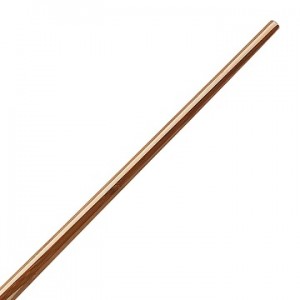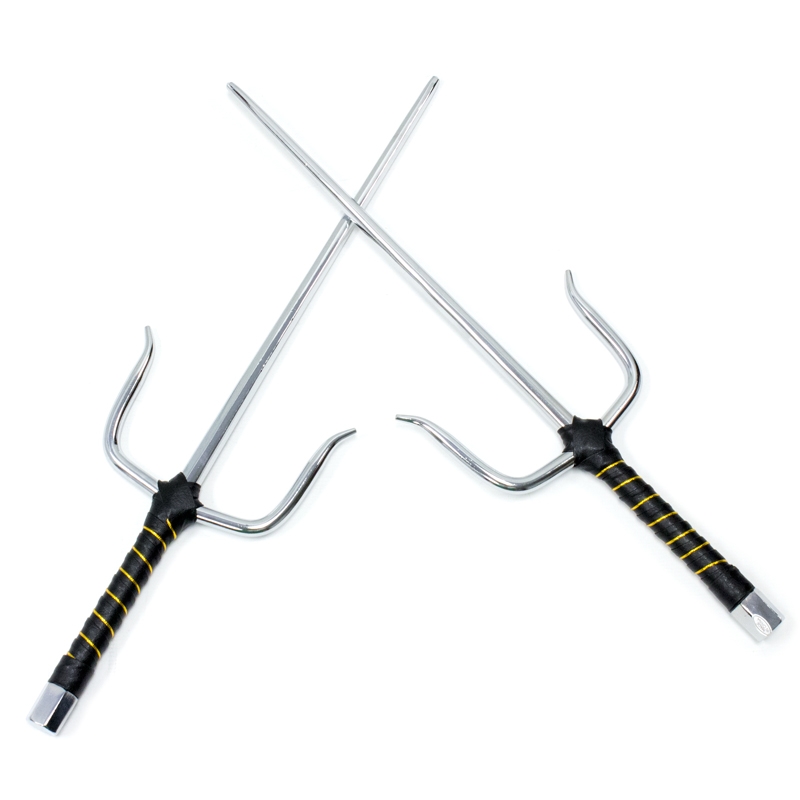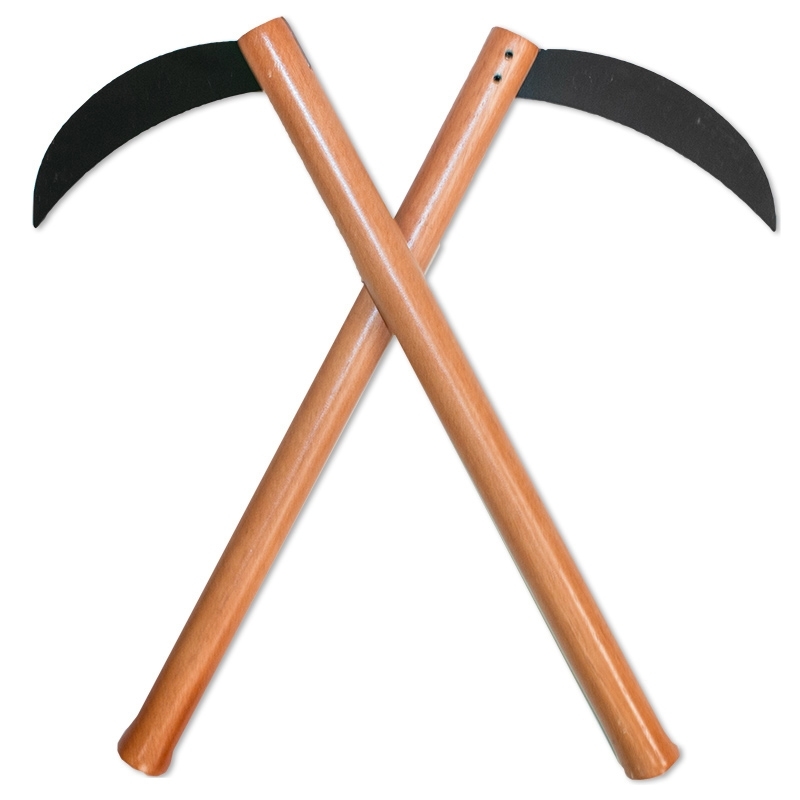Weapons

Bo
The Rokushaku Bo, Roku means six, shaku is a measure of about 1 foot in length. Hence the Bo is about 6 foot. This weapon is the most commonly used weapon in Okinawan Kobudo systems. The Bo tapers from the centre of about 1½” to each end of approximately ¾”. It is made of a hard wood, generally red oak. The taper maintains the fulcrum of the Bo at the centre, keeping it balanced and easier to handle. It also provides more tensile strength, making it more flexible and lass prone to breakage. This taper also facilitates powerful whipping of the Bo during striking and blocking.

Sai
The Sai is thought to have been introduced to Okinawa through trade with one of the Asian countries. It did not become popular in Japan, but developed primarily in Kobudo styles of Okinawa. The Sai was thought to be used by the police, Chichi saji of the Ryukyu Kingdom. The Chinese character (kanji) for Sai means “hair pick”, thus creating conjecture that the Sai was either designed after a hair pick or named after one because of its similar appearance. Other theories of origin are that it was fashioned after the shape of the human form, hence a policeman’s badge of office. Also after a religious symbol “Manji”, which can be seen on church roofs.

Kama
The Kama is a bladed weapon and is indigenous to many farming countries of Asia. It is a sickle used in harvesting. Long and medium versions were used to cut fruit from papaya trees. The short version was used to harvest rice and cut grain. Although Kama practitioners in Kobudo use them in pairs, they were used individually for farming, with a spare kept in the belt in case of breakage. In the time when metal was scarce, the Kama has been know to be made from seashells for the cutting edge. The handle is made of hardwood that is larger at the end to aid gripping. A curved blade, sharpened on the inside, extends from one end.

Eku
The Eku is the Okinawan oar, although it is also used as a tiller, not only propelling a small boat but controlling the course as well. The reason for its shape, in comparison to the western oar, is mainly due to its ability to cut through the strong currents around Okinawan coastline. The Okinawan fishermen, after tying up their boats on the beach, used to take the Eku with them, both for self-defense and to discourage the theft of their boats. .

Tinbe
The Tinbe and Rochin are a shield and short spear weapon combination. It was used in actual warfare in Okinawa and has a long history. The Tinbe (shield) can be made of various materials but is commonly found in vine or cane, metal, or turtle shell. The Rochin (short spear) is usually equivalent to the length of the forearm and can be found in many differing designs varying from spears to short swords and machete-style weapon.
